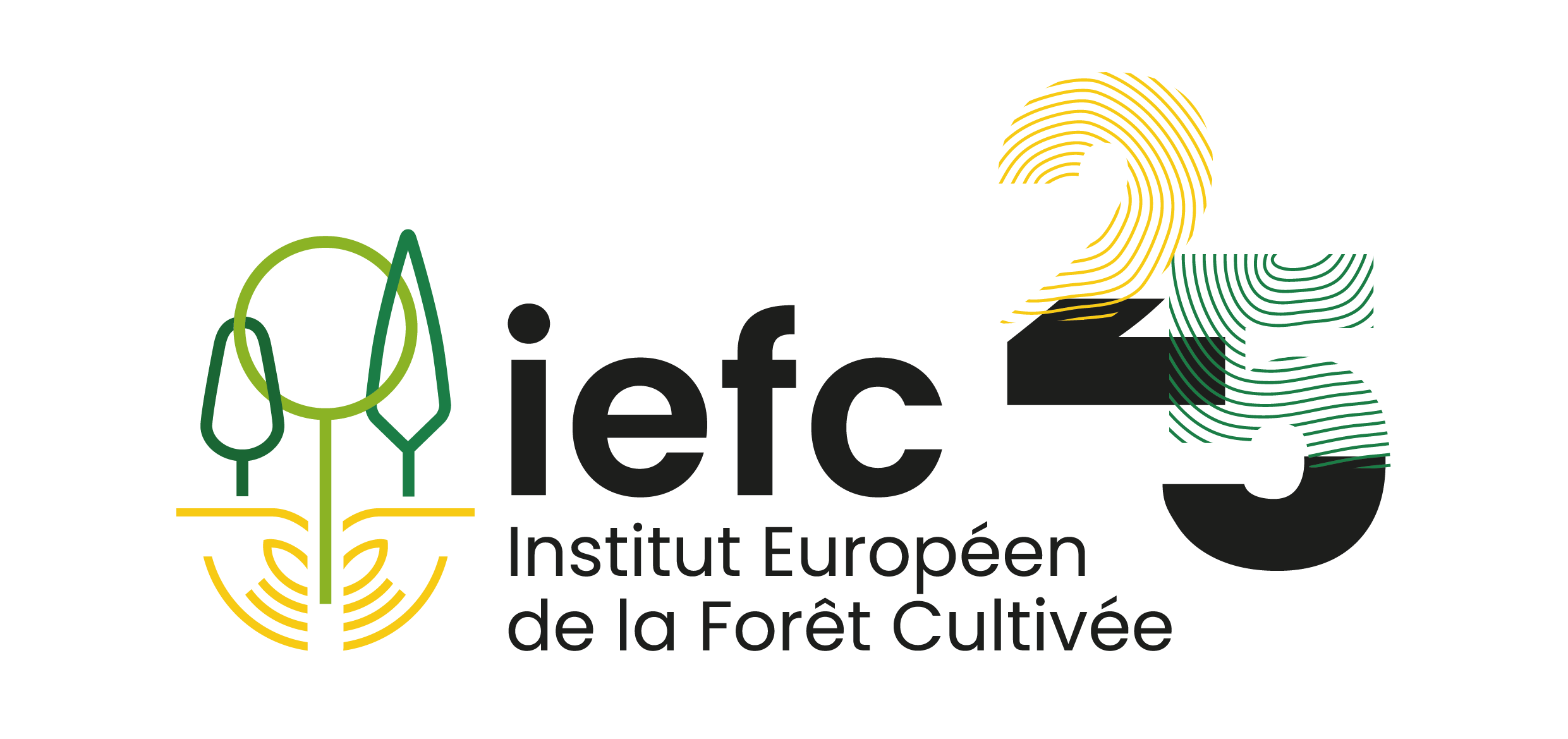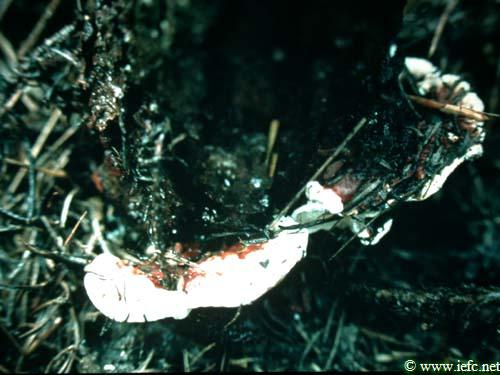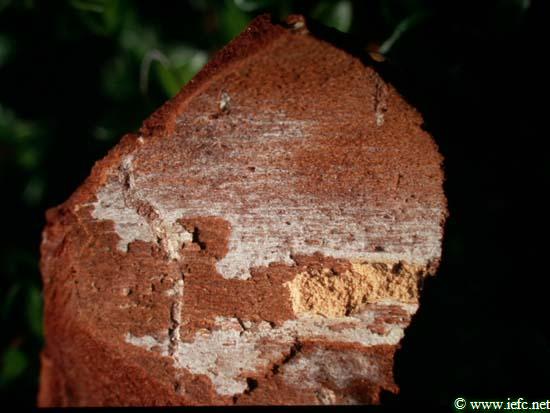Annosus root disease
Heterobasidion annosum (Basidiomycota, Aphyllophorales)
Synonyms: Fomes annosus, Fomitopsis annosa, Polyporus annosus, Ungulina annosa
Asexual stage: Spiniger meineckellus
Synonyms: Oedocephalum lineatum, Oedocephalum meineckella
Annosum root rot
Host tree
Many pine species such as Scots (Pinus sylvestris), Maritime (P. pinaster), Corsican (P. nigra ssp. laricio), Mountain (P. uncinata) and Loblolly pine (P. taeda), and also spruce (Picea), fir (Abies) and Douglas-fir (Pseudotsuga).
Identification
- Slow crown decline in old trees (Photo 1) with reduction of shoot growth and needle length, often resulting in tree death. In young trees, death is more rapid with the foliage turning red then brown.
- At first dead and dying trees scattered in the stand, later on formation and evolution of disease centres.
- On stumps and dead trees presence of perennial fructifications at ground level (Photo 2), very often partially covered by litter or vegetation. Fruit bodies are characteristic: form of a bracket, rubbery in texture, the upper surface reddish or dark brown with concentric zones and a distinct white margin; the lower surface is white with numerous small pores.
- At the root collar of dead or infected trees presence of paper-thin, white mycelium beneath the bark (Photo 3).
- Methods for conidial stage identification from infected wood are well developed in laboratory (Photo 4).
Damage
- Infected trees often die, especially pines.
- Mortality can appear in young stands but is more frequent in older stands after the first thinning (15-20 years old pines). Expansion of ‘infection centres’ (gaps) often stops in stands of approximately 40-50 years.
- In fir and Douglas-fir the disease can cause heart butt rot and mortality. In spruce the disease causes hearth butt rot only.
Biology
- Annosum root disease is a primary pathogen on pines (infecting healthy trees). Frequently mortality occurs without other stress factors, but weakened trees are most likely to be successfully attacked.
- Basidiospores are produced all year when temperatures are between 5°C and 32°C and are carried away by air currents.
- Spores germinate only on freshly exposed wood surfaces (stump surfaces or wounds on the roots and stem).
- H. annosum spreads from stump and/or tree to tree by root contacts or grafts.
- After penetration, H. annosum invades the stumps and pine roots by means of mycelium.
- After tree death, the fungus can survive in stumps and dead roots for, at least, 50 years.
Risk factors
- Annosum root disease occurs frequently on deep, well-drained sandy soils or sandy loam containing little organic matter. Damage is slight in soils with relatively high content of clay or organic matter, poor internal drainage or high water table.
- Soils with a high pH.
Pest management
Preventive measurements
- Prevent spore infection of fresh stumps by biological (Phlebiopsis gigantea) or chemical (urea, borate based fertilisers) treatments. Preventive treatments by mechanical or manual applications are now operational.
- In stands with disease centres: dig trenches of at least 1 m deep to isolate infected trees from healthy parts.
- Minimize thinning and only thin when airborne spores are least abundant (in winter or hot summer).
- Use wide spacing when planting to minimize root contacts and the need to thin.
- In poor and well-drained sandy soils (major risk factor) plant tree species less susceptible to H. annosum, including deciduous species.
- Excavation of infected stumps has been tested, showing less mortality in new plantations.
Curative control
- No fungicides are registered against this disease.




